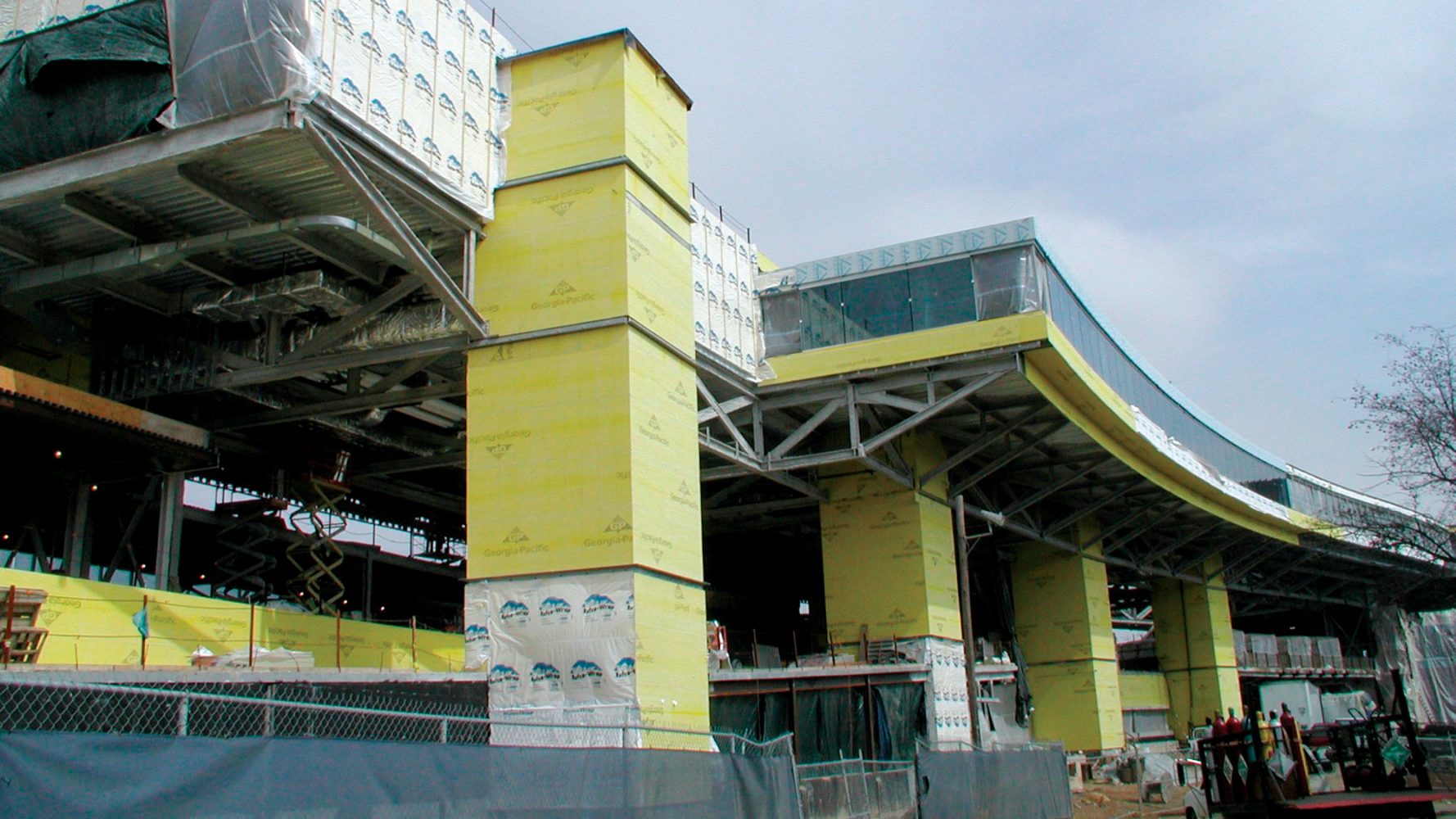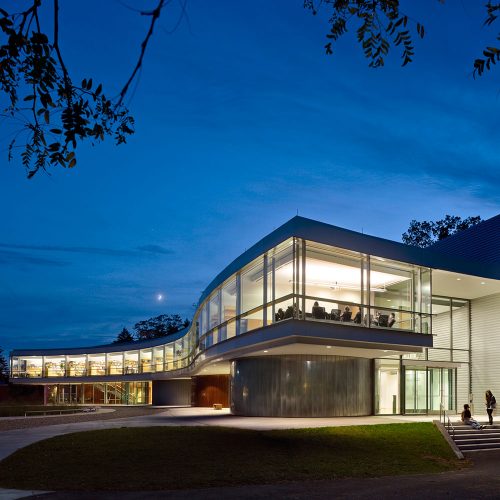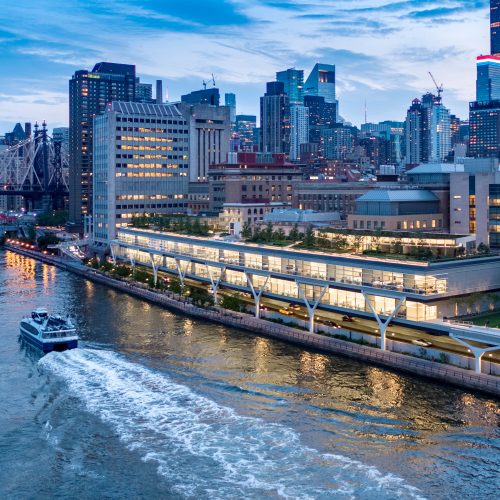Pennsylvania State University, College of Information Sciences and Technology
In the process of developing design alternatives, Rafael Viñoly Architects identified an additional site diagonally across a busy street that bisects the Penn State campus to create a facility that is both a building and a bridge.
The original program for this project called for the design of a new home for the College of Information Sciences and Technology (IST) that would demonstrate the university’s commitment to advancing technology as a bridge between the sciences and humanities. After careful evaluation of the program, site, and existing campus facilities, Rafael Viñoly Architects proposed a radical reinterpretation that was subsequently adopted. Two sites were examined prior to the start of schematic design. The original brief for the project included the building for information technology and a pedestrian bridge over U.S. Route 322, connecting the building to parking lots and the engineering school campus.
In reinterpreting the program, Rafael Viñoly Architects saw the new IST as an opportunity to bridge this gap, unifying the east and west campuses. The design called for the appropriation of an additional site diagonally across the street and of similar dimensions to the original, which made it possible to create a facility that is both building and bridge. The goal was to make the building the bridge and to connect two halves of the Penn State campus with a fluid walkway as opposed to an isolated bridge element. Building Information Modeling was used to verify erection sequences over the active highway below. Once the President of Penn State was presented this concept he became an enthusiastic supporter of this design alternative.
The design extends an important pedestrian artery in the campus and incorporates it into the architecture as a pedestrian and cyclists promenade that starts on a ramp at one end of the long structure, rises up and over the main thoroughfare and lands gently on the other side, also via a ramp. Distributed along this promenade are classrooms, administrative offices, and a high-technology auditorium known as the “Cybertorium.” At the span’s midpoint, a café provides a social and collaborative environment with open views of the wooded landscape of the campus. A second floor is suspended above the promenade and contains research facilities, including computer labs and faculty offices. This level accommodates all classrooms and computer labs with flexible floor plates. The elements come together to create a dynamic new home for 800 students and 80 faculty and staff members of the IST.
























